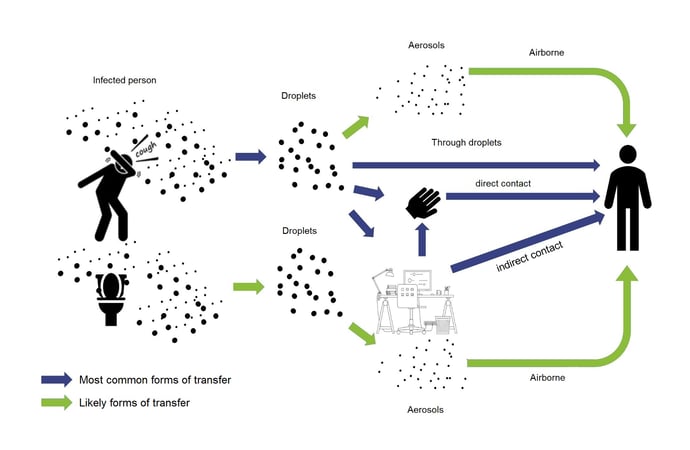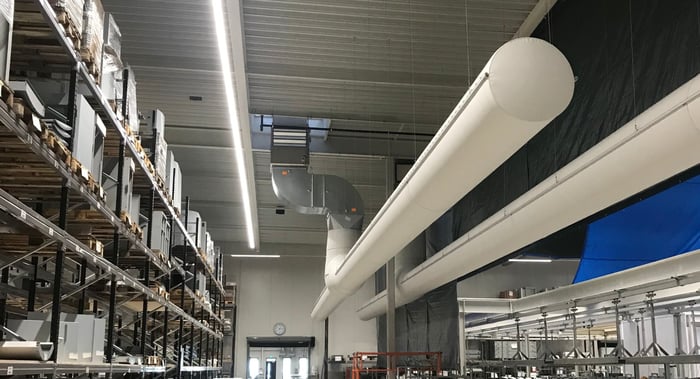Currently, the coronavirus is captivating everyone. Together we try to restart society in a safe way as soon as possible. Various studies have shown that sufficient ventilation of indoor spaces is potentially more important than continuous washing hands. Scientists and virologists claim that viruses spread easily through aerosols, tiny droplets, in the air.
In this blog we zoom in on aerosols, how a virus can possibly spread via aerosols and what we can do about it.
What are aerosols?
Aerosols are liquid or solid particles floating in the air. They can be everywhere and can be made of anything light enough to float, such as smoke, water or coronavirus saliva. Aerosols are released, for example, when someone breathes or talks. They can be infinitesimally small or big enough to see with the naked eye. Due to the small size and light weight, these particals can spread far and stay in the air for a long time.
Increased risk of transmission by aerosols
Research has shown that these small droplets can increase the transmission risk of the coronavirus. Prof. Dr. Bonn of the UvA says the following regarding this topic: "The smallest droplets (aerosols) can get deeper into the lungs, according to experiments with a machine that imitates the lungs. This could mean that aerosols can make a person more seriously ill than the larger droplets, which stick in the throat".
How important is ventilation?
Infections are more likely to occur in poorly ventilated buildings. German top virologist Christian Drosten, advisor of Chancellor Merkel, said to the Deutschlandfunk that more attention should be paid to the role of aerosols in the spread of the virus because there is not only drop infection but also aerosol infection. Virologist Christian Drosten:
“Adequate ventilation of indoor spaces is just as important as washing your hands.”
Aerosols can accumulate in areas inadequately ventilated. Various scientist now see this as an important route for possible infections. Nevertheless, the importance of proper airing/ventilation has received limited attention until now. Even though this problem can easily be solved.

Fresh air in buildings
For many buildings there is a challenge in terms of ventilation. This means that effective ventilation of buildings is currently on the moderate side. You can solve this in a simple way, for example by opening a window - something is always better than nothing.
Prof. Dr. Martin Kriegel: "The room climate plays a major role. In principle, it can be said that with typical ventilation (legal minimum ventilation) in residential and office buildings, the pathogens remain in the room for hours. Any increase in the supply of fresh air is therefore generally recommended".
When it is not possible to open a window or the temperature rises too quickly in your factory, office, gym or any building? Check out the solutions available to ventilate as much as possible and at the same time provide sustainable cooling or heating.




